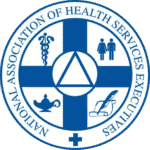If you’re interested in a career in giving back to your community, consider working at an FQHC. What are these organizations and why are they so important to the communities they serve? What kinds of patients use these facilities and what is it like to work in an FQHC?
The Basics—FQHCs
There are approximately 1,368 Federally Qualified Health Centers (FQHCs) serving patients around the country today. Including Look-alikes and Service Sites, the United States has more than 14,000 FQHC locations serving close to 30 million patients each year. To become an FQHC, certain criteria must be met, including:
- They must provide services to anyone, regardless of their ability to pay.
- They must establish a sliding fee discount payment range for patients.
- They must be a non-profit or public institution.
- They must be community-based with a governing board made up primarily of patients.
- They must serve a medically underserved population or geographic area.
- They must offer primary care services.
- They must have a quality assurance program.
FQHCs and other community-based care providers receive federal funding to offer healthcare to residents in underserved areas. The Health Resources & Services Administration (HRSA) says some of the names of these facilities include:
- Community Health Centers
- Healthcare for the Homeless
- Health Centers for Residents of Public Housing
- Migrant Health Centers
Although one in five rural residents are served by these healthcare facilities, FQHCs are in both rural and urban areas of the United States. These facilities offer a variety of services, including:
- Dental care
- Primary care
- Behavioral health
- Chronic disease management
- Laboratory and testing services
- Mental health
- Preventative care
- Radiology
- Social services
FQHCs are targeted to provide care for some of the most vulnerable populations in the United States. This includes people with financial hardships or who are below or at the poverty line. It could include people with language barriers, such as the migrant workers who work our nation’s farms. It could include the homeless or those living in public housing.
FQHCs remain a vital safety net in our nation. The clinical and administrative teams that work in these facilities offer a service to their community that no other provider in the healthcare community can match. There is a sense of altruism and service that comes with this work that is rewarding and challenging.
Working in an FQHC allows you to provide a service to a community that desperately needs your help. It is this sense of giving back that has caused many providers in the healthcare community to move from their existing careers into the FQHC field. This type of practice puts the focus on quality care and caring for patients; these organizations do not exist to make a bottom-line profit but instead to serve their communities.
There are many benefits of working in an FQHC:
- You will have a better work-life balance with a 40-hour week, limited on-call, paid vacations, sick time, and holidays.
- You will receive financial perks such as continuing education and license and DEA reimbursement, as well as student loan repayment packages, retirement, and more.
- You will help underserved communities and people that will need your help the most.
- You will learn new skills because providers at FQHCs treat a variety of illnesses.
How can you help FQHCs? UHC Solutions knows how. Contact us. We specialize in matching top-quality employees with the best FQHC facilities in the country. Talk to our team to find out more.





